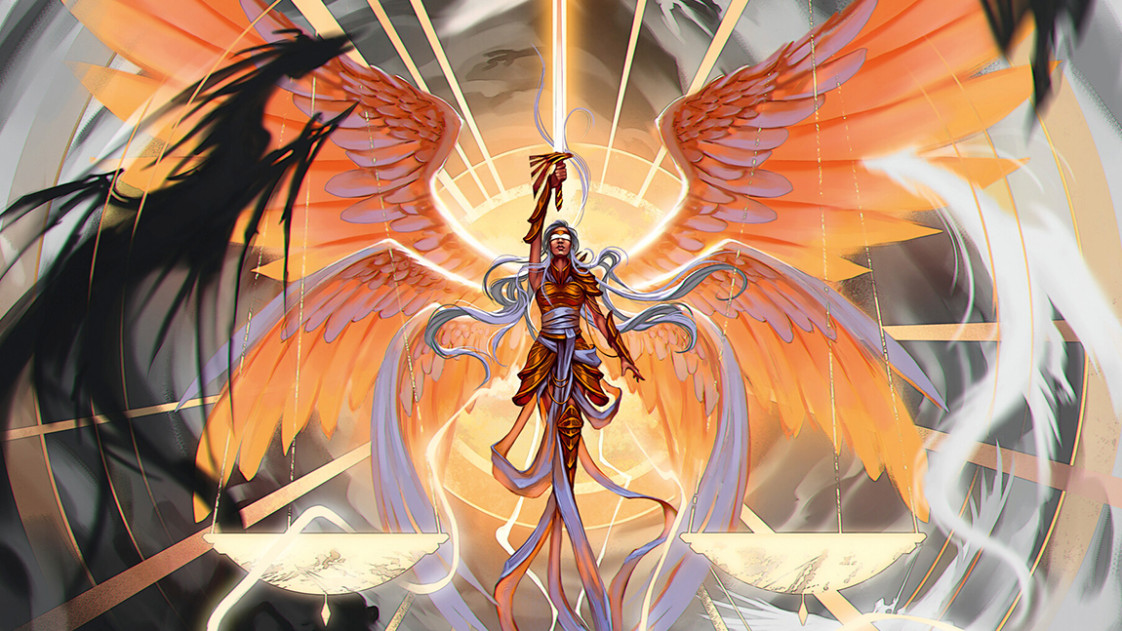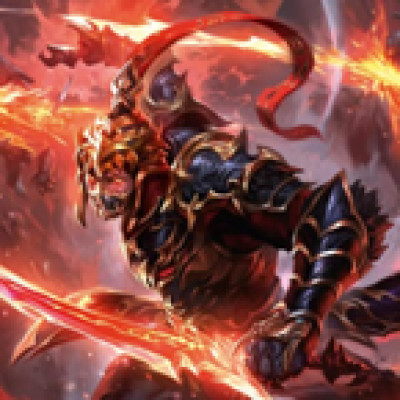Now that the setting moon has come and Enigma has hit Living Legend status, we are once again down to one Illusionist legal in Classic Constructed. Ever since the Illusionist class was introduced in Monarch with the original Prism, Legend Story Studios has been engaged in a delicate balancing act to maintain the class' balance as competitive players continue to find potential in the class and push its heroes out of the format.
Hello dear reader. My name is Adam Ray. I've been writing nerd news across the internet for nearly a decade. I've had deep loves for other card games, which I have heartlessly abandoned for Flesh and Blood. Despite dabbling with Warrior and falling in love with Assassin, I am a true believer in the Illusionist class. There's just something so impactful about the idea of creating things on the board to do battle for you.
In this article, I want to discuss why Illusionist has been a class strong enough to see three of the four members of its class hit Living Legend, why the one remaining Illusionist is so different from her other classmates (and her past self), and what the future for the class looks like in the upcoming, post-Enigma metagame.
Spectras and Phantasms
Early Illusionist card design was centered around forcing a certain kind of interaction from your opponent. Phantasm meant they'd need to give a premiere offensive card to the defense instead; Spectra involved giving their entire action point to removing an ongoing source of value.

Phantasm is a balancing keyword, which meant they could push the stat line on certain cards like Wartune Herald. A 1-cost 7 is very above rate, and the rest of the red Heralds all have on-hits relevant to the Prism gameplan. In practice, giving a card like Command and Conquer or Erase Face to defend an attack is the mode you least want to use for that card; by asking them to re-allocate that threat, you the Illusionist are in a better spot, especially if you can follow it up by using Phantasmal Footsteps.

Spectra has been widely considered to be a mechanic that is fundamentally un-fun to play against. Sacrificing an action point to clear an object from the arena - especially if you're a class like Guardian or Ranger that struggles to get go again - is a truly huge tempo cost. This wasn't as big an issue while it was just Light auras, but the four spectra auras from Everfest gave Prism a significant competitive edge which carried her and Luminaris all the way to Living Legend 15 months after Monarch's release. These designs have lead LSS to move away from printing cards with Spectra again.
Dragons on Board
Dromai took the idea behind permanents on board - and the phantasm keyword - and brought it somewhere slightly more mechanically fair with allies.


The dragons that Dromai used have phantasm, which encourages the same value exchange. Dromai's dragons do not have spectra. Attacks directed at them cannot be defended.
Despite all of this sounding like an equitable give-and-take, if Dromai is able to go wide, there are very few ways to actually profitably deal with multiple dragons. Unless a deck could present disruption which could go over the dragons or could eke out enough chain links to threaten the opponent while still removing dragons, Dromai's growing board presence quickly became overwhelming.
Dromai hit Living Legend 22 months after her Uprising release.
Ward on the Board
LSS moved away from phantasm and spectra by re-focusing on ward - an effect present on Prism's Spectral Shields but keyword-ed later. It was cards like Sand Cover and Sigil of Protection that debuted the keyword, before it was given more prominence on cards like Wave of Reality.


Enigma, Ledger of Ancestry was the first Illusionist to care about ward; more accurately, her signature weapon Cosmo, Scroll of Ancestral Tapestry is what allows ward to become weapons. Turning on-board damage prevention into a source of aggression is what created a polarising state of affairs. By creating a great deal of offensive output when played in a way to defend it and prevent the ward being destroyed, you get a value exchange that most numbers-based decks simply cannot match.
Even as Enigma's deckbuilding philosophy moved away from cards like Haze Bending and Shimmers of Silver, the balance of how many auras with ward were played was always up for debate. Manifestations of Miragai and Restless Coalescence were never far from the Mystic Illusionist. In her later play, she became a versatile deck that could go on the offensive or comfortably defend; due to her relatively strong matchup spread, any deck that had a bad game into her was all but exiled from the meta.
Enigma reached Living Legend just under a year after her release in Part the Mistveil.
The Light Returns
This leaves Prism, Awakener of Sol alone again as the only Illusionist.

She plays very differently compared to the others in her class, and differently from her past self: she's fundamentally an aggro deck. When The Hunted was released, and the metagame responded to the speed of Cindra and Viserai, there was a case for most other decks to block efficiently against Cindra and to include blues to try and stem the runechant damage of Viserai. This meant a distinct reduction in the number of poppers most decks were otherwise running - opening a window for Prism. Even after the Runeblade LL'ed and people figured out how to block Cindra, Aurora shot to the top of the metagame and reinforced the need for 0-for-4 defense reactions, rather than poppers, in players' sideboards.
For flavor reasons, I feel bad for Prism. She has seen so many of her classmates come and go. With Enigma gone from the metagame, Prism remains the only legal Illusionist hero. The vast majority of players who were playing the Mystic Illusionist, to my knowledge, have transitioned to other midrange value decks rather than remaining loyal to the class. (Florian, for example, appeals to Enigma’s gameplan of building aggression on the board, then sending damage in a way that overwhelms the opponent while leaving themselves a lot of easy avenues for blocking.) Dromai was surprisingly similar in her gameplay. Her in-hand aggression, with lots of very effective red attacks, would overwhelm an opponent while she quietly loaded her board with dragons to present a secondary form of aggression.
Prism, Awakener of Sol does not play in either of those camps. She sends large Herald attacks turn after turn, then builds a board of angels that feel a great deal more fragile than Dromai’s dragons. That, coupled with her being at 32 life, all adds up to Prism needing to take a large number of risks during play to retaliate.
These factors contribute to a knowledge gap that some players need to cross when playing against Prism; but for those who know which Herald attacks to respect, how best to play around Instant speed effects like Angelic Wrath, and how to leverage their own game plan to pressure Prism, they stand a chance at pushing back against what the Light Illusionist can do. Any deck that can send consistent damage, a decent stream of disruption, or both may have an edge into Prism. Alternatively, any deck that can run 6-power attacks without any downside gains a major advantage against the barrage of phantasm. The distinct lack of this in the pre- and post-Viserai metagame allowed for the conditions for Prism to grow in playability - but could prove problematic for her if she begins to rise to the forefront of the meta.
The Light Ahead
The future in the metagame for Prism is unclear. Whenever the rate of poppers is low, and the skill of the pilots is high, Prism is likely to bring a level of fairness to the Illusionist class that will keep her in consideration as an aggro deck with abnormally high stats; but with the meta often subject to change, it's unclear if this librarian from Solana is ever expected to shine through.
As for the Illusionist class as a whole, while the class philosophy is intended to play with arena-based permanents and the card pool still includes cards with spectra and phantasm, the gameplay feedback loop will always be something that leaves the Illusionist players loving it, and those against it feeling less certain.
With Pro Quest Singapore doing an absolute number on the metagame, taking more heroes to Living Legend than any other time in the game’s history, we have to wonder what the meta needs to look like to support Prism play. Ultimately, it comes down to the rate of play for decks that run a consistent number of poppers. While most decks have access to the generics, there is an opportunity cost to playing them. Hyper aggressive decks can’t justify their inclusion.
And that’s what leads me to say, with a heavy heart, that the Light might not shine so bright for Prism in the days ahead. Aggressive decks will wane heavily with Aurora departing from the game. The decks that remain look to be Fai or Arakni, 5L!ppy. With the rise of Florian and other Guardian decks that can run 6-power attacks as part of their gameplan, it becomes very hostile towards a deck so reliant on phantasm. Sure, there are versions of Prism that can rely on playing Iris of Reality and creating multiple auras, or focus on the ability to loop Arc Light Sentinel; but with the metagame about to change again with the advent of High Seas, it might be time to let Illusionist return to the fringes of the metagame and see what Necromancer's board-based control looks like.




